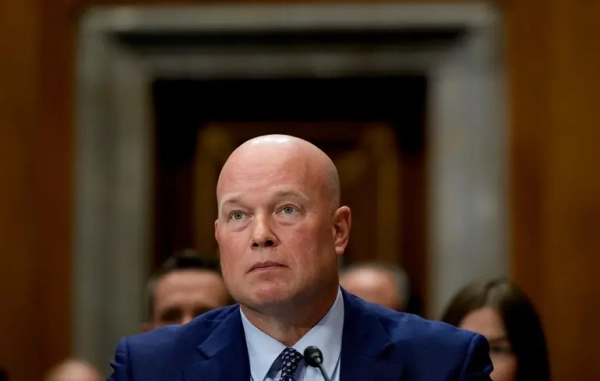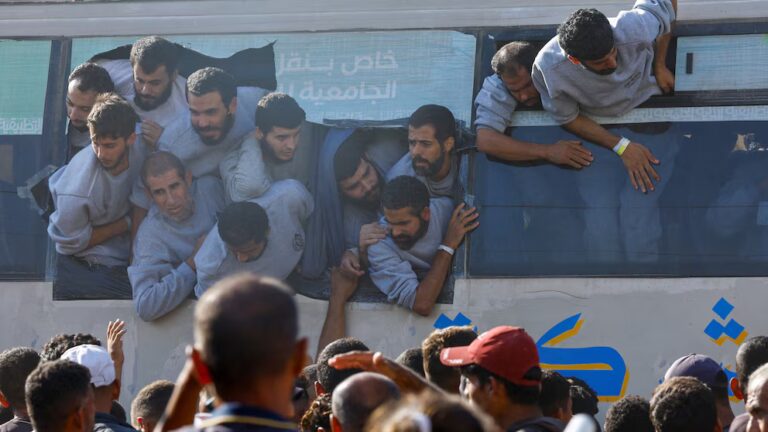Should Congress fail to extend aid to Ukraine, it would “change the character of the war.”
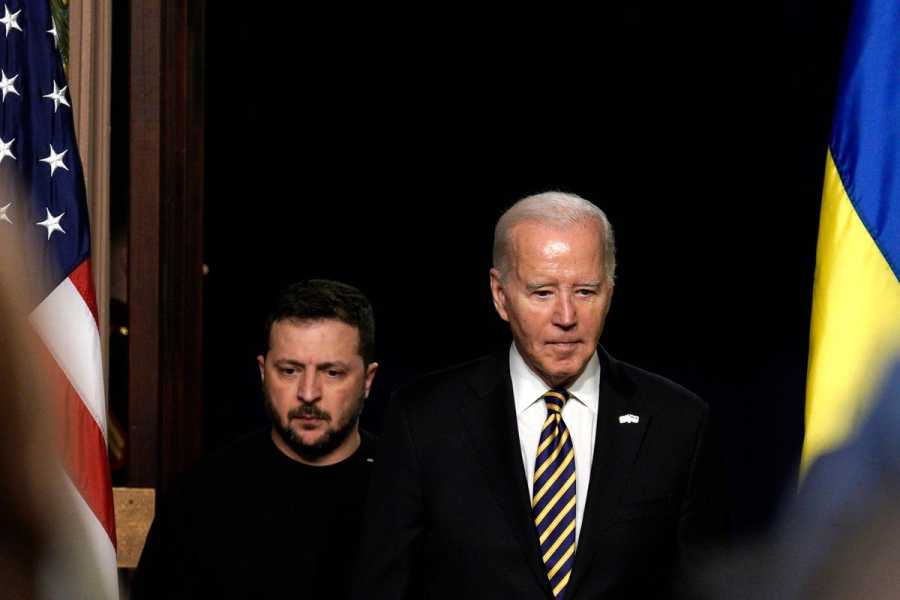
US President Joe Biden, right, and Ukraine President Volodymyr Zelenskyy arrive during a news conference in the Indian Treaty Room on the White House complex, in Washington, DC, on December 12, 2023. Yuri Gripas/Abaca/Bloomberg via Getty Images Joshua Keating is a senior correspondent at Vox covering foreign policy and world news with a focus on the future of international conflict. He is the author of the 2018 book, Invisible Countries: Journeys to the Edge of Nationhood, an exploration of border conflicts, unrecognized countries, and changes to the world map.
For nearly two years, Ukraine has fought back against Russia’s invasion far more effectively and successfully than many expected. But whether it’s able to continue that resistance may depend on the results of a debate in Washington that has absolutely nothing to do with Ukraine. It’s a bizarre and uncomfortable situation for the embattled country and its leading advocates.
“In the hands of these senators and representatives is the future of Ukraine and the lives of hundreds of thousands of Ukrainians,” Daria Kaleniuk, a leading global campaigner for the Ukrainian cause and cofounder of the International Coalition for Ukrainian Victory, told Vox.
But such urgency is not in evidence on Capitol Hil, at least at the moment. Congress departed Washington for the year on Thursday without approving a new defense spending package that would include $61 billion in additional military funding for Ukraine. The Biden administration had proposed the aid as part of a larger package that also includes military assistance for Israel and Taiwan, humanitarian aid for several conflicts, and funding for border security.
Congressional Republicans have conditioned support for new Ukraine funding on concessions from the administration on immigration policy, which are strongly opposed by Democrats. That left President Joe Biden’s shifting his oft-stated pledge to support Ukraine for “as long as it takes” to “as long as we can” during a meeting with Volodymyr Zelenskyy at the White House during the Ukrainian president’s disappointing visit to DC to drum up support this week.
It’s still very possible that an immigration deal will be reached that allows the Ukraine funding to go forward when Congress returns next month. Kaleniuk remains cautiously optimistic that the issue will be resolved somehow, saying, “I believe in the wisdom of the American people.”
But even if the flow of aid resumes, it may only be a temporary reprieve. Opponents of aid to Ukraine in the US and Europe are growing bolder. A $52 billion financial support plan from the European Union was also blocked this week because of opposition from Hungary.
Meanwhile, even some of Ukraine’s staunchest supporters are distracted and divided by other crises including the war in Gaza. Donald Trump, who has vowed to end the war in Ukraine in “one day” — presumably by cutting a deal with Russia — is now leading in many presidential polls and may very well return to the White House next year.
American aid has made it possible for Ukraine to fight back against Russia’s invasion over the past 21 months. But Ukrainians and their supporters now need to ask themselves: What would happen if that aid simply disappeared?
Barrel, meet bottom
The United States has provided more than $71 billion in aid to Ukraine since the start of the war. That includes $43.9 billion in military assistance, more than the next 11 donating countries combined, according to a tracker maintained by Germany’s Kiel Institute.
But that money is almost fully drained. As of mid-November, the Defense Department had spent 97 percent of the funds it had been allocated by Congress for assistance to Ukraine. The State Department had spent 100 percent of its funds. In November, Pentagon deputy press secretary Sabrina Singh acknowledged that her department’s regularly announced allocations of new weapon deliveries “have been getting smaller because we have had to meter out our support for Ukraine.” The Kiel Institute’s data shows that new commitments of international support for Ukraine fell almost 90 percent between August and October of this year and are now at their lowest level since the war began.
For all that the debate around aid to Ukraine has often focused on whether and when the country will get advanced weapons systems like Abrams battle tanks, F-16 fighter jets, and ATACMS missiles, the most critical supply Ukraine receives from the West is old-fashioned artillery ammunition. At times in the fighting, Ukraine has fired as many as 6,000 to 7,000 of these shells a day — about half of what the US produced in a month before the war. Since then, the US has made major investments in building up shell production capacity, but that process will likely take years. Ukrainian troops on the frontlines are already reporting shell shortages as the aid packages dwindle.
Nearly as important is ammunition for the air defense systems used to protect Ukrainian cities from Russian missile barrages. These systems got a workout this week, shooting down 10 Russian missiles over Kyiv in a single morning. The missile attacks are expected to ramp up this winter as Russia targets Ukraine’s energy infrastructure in an effort to punish and demoralize the Ukrainian population.
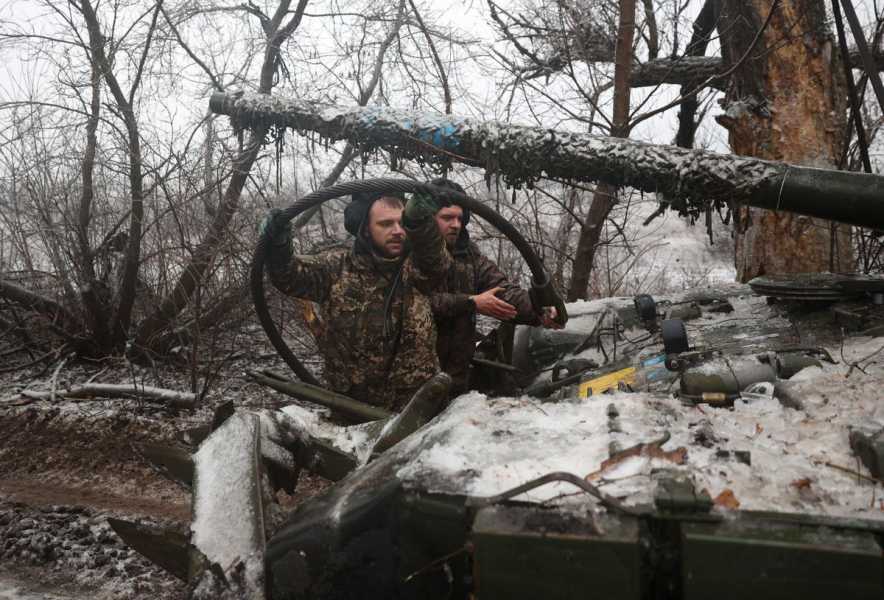
Ukrainian tank crews take part in a military drill not far from the front line in the Bakhmut direction, in the Donetsk region, on December 15, 2023, amid the Russian invasion of Ukraine. Anatolii Stepanov/AFP via Getty Images
If Washington fails to allocate new funds, the impact wouldn’t be felt in Kyiv the next day. There’s often a delay of several months between when weapons deliveries are announced and when they will be delivered. Armaments and equipment that were announced as far back as September may only be reaching the battlefield now.
“One or two months gap: It’s not pleasant, but it’s not crucial for us,” Alina Frolova, a former deputy defense minister of Ukraine who now advises the government, told Vox.
Beyond that, things could get dicier. Even with the tens of billions in aid delivered thus far, Ukraine has struggled to retake Russian-held territory this year. The counteroffensive that began in June has advanced only about a dozen miles. Gen. Valery Zaluzhny, commander of Ukraine’s armed forces, recently described the war as having entered a phase of “positional” combat, one where the front lines remain static and most of the fighting is long-range artillery fire rather than troop maneuvers.
But static doesn’t mean inaction, and just maintaining those positions requires an enormous amount of ammunition, much of it from the United States. What Ukraine can do from this point on largely depends on whether and how much US aid and ammunition they can draw from. Should that air be curtailed, “soon they won’t have enough to sustain the counteroffensive,” said Mark Cancian, a retired US Marine colonel and expert on defense logistics at the Center for Strategic and International Studies. “In maybe two months, the Ukrainians will have a hard time doing counterattacks. By the summer, they’ll be hard-pressed to defend themselves against Russian attacks.”
A new kind of fighting
In a recent poll, 58 percent of Ukrainians said the country should continue to fight Russia, even with a substantial reduction in international support, while 32 percent said the country should seek peace negotiations. But a negotiated end to the war requires a partner, and there’s little evidence that Russia would be open to negotiations.
In his annual marathon news conference on Thursday, President Vladimir Putin declared that his goals for the war “have not changed” since the start and that there would be peace only when those goals are achieved. He defined those goals as “the denazification of Ukraine, its demilitarization, its neutral status.” In other words, the goal is not control of a few more miles of territory in Eastern Ukraine — something that would hardly seem worth the estimated 315,000 troops Russia has lost, according to a newly declassified American intelligence assessment. It is regime change.
So both sides seem committed to continuing the war — but what would it look like if the US decides to bow out? “A failure to supply military aid to Ukraine isn’t going to cause an immediate Russian victory, but it is going to change the character of the war,” said Franz-Stefan Gady, a defense analyst with the Center for a New American Security who has made multiple research trips to the front lines in Ukraine. Gady said that while Ukraine’s military has traditionally been an “artillery dominant military force,” without shells for those guns, “they would likely start pursuing more asymmetric strategies. That is, withdrawing from certain sectors of the front lines into urban settlements, trying to draw Russian forces into urban combat.”
This scenario is a bit closer to what many analysts expected the war in Ukraine to look like before the February 2022 invasion, when few believed Ukraine’s military could stand up to Russia’s in conventional combat. It’s also a grim prospect for Ukraine’s civilians. Urban combat always has an extremely high civilian death toll and given the heavy-handed tactics employed by the Russian military, the list of Ukrainian cities and towns entirely decimated by war — Mariupol, Bakhmut — would likely to grow.
Will Europe step up?
Are there any workarounds to be found if Congress doesn’t act? Much of the funding allocated by Congress is actually to pay for replenishing US stocks for material shipped from American warehouses to Ukraine. In theory, the US could continue to ship weapons and ammunition to Ukraine without the money to replace them, but that seems unlikely given that officials have already been expressing concern about the strain the war is putting on US stockpiles. (When asked if the Pentagon would consider such a scenario, a spokesperson told Vox that it would be “inappropriate to speculate on hypothetical situations.”)
As for whether the White House could find a way to continue to allocate funds without Congress, Cancian said, “I’m sure that they have lawyers scouring the statute books to find a way, but I’m not aware of any.”
The US, of course, isn’t the only country supplying military aid to Ukraine. Relative to the size of their economies, many European countries have actually given more. Just this week, Zelenskyy met with Nordic officials on his way back from Washington, and the leaders of Norway and Denmark pledged sizable new aid packages. The much debated F-16 fighter jets that Ukraine has been promised in the coming months are likely to come out of the stocks of European militaries and would still likely be sent, whatever Congress does in the coming weeks.
A report last week from Britain’s Royal United Services Institute urged European governments to make major new investments in ammunition production in order to meet the Russian military threat with diminished US support. But Europe’s efforts in this area so far have been slower than those of the US. Germany’s defense minister conceded last month that the EU would miss its goal of providing Ukraine with a million shells by next March.
Kaleniuk said the sheer size of America’s defense industrial complex makes it irreplaceable. The US spends more on defense than the next 10 countries combined. “A lack of aid from the US can’t be fulfilled by anyone else,” she said. “Europe is not able, even if it is willing, to produce enough military equipment for Ukraine.”
Europe is also experiencing its own fatigue with the war effort, as shown by the EU’s failure this week to overcome a veto by Hungary’s pro-Russian Prime Minister Viktor Orban on a new aid package. A similarly Ukraine-skeptic government was recently elected in Slovakia. Europe has been willing to overlook the threat from Russia before, including after the initial Russian invasion of Ukraine in 2014. If US support wavers, more countries may follow suit.
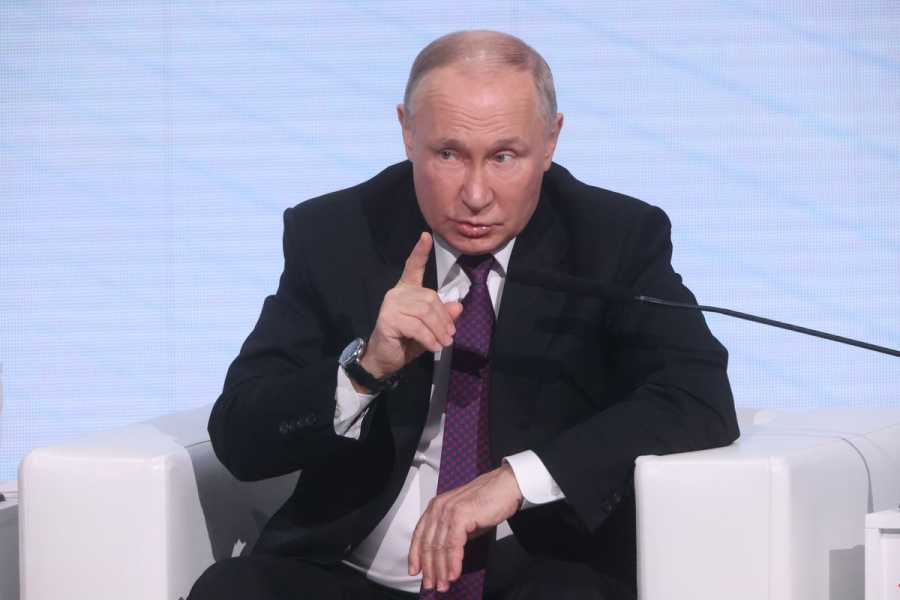
Russian President Vladimir Putin gestures during his speech at the 4th Congress of Russian Railway Workers, on December 15, 2023, in Moscow, Russia. Contributor/Getty Images
“Everyone is saying the Europeans need to step up,” said Cancian. “It’s more likely they’re going to step back.”
The costs to come
Skeptics of aiding Ukraine argue that the US is committing itself to pumping billions of dollars into a war that has settled into a stalemate with no end in sight. New House Speaker Mike Johnson has, for instance, accused the White House of failing to articulate a clear path to victory for Ukraine with US support.
But if the stalemate is broken, the result is likely won’t be peace, but an even bloodier conflict moving much closer to the borders of NATO countries that the US is bound by treaty to defend. This doesn’t mean Putin’s military would necessarily invade Poland or the Baltic states in the aftermath of a victory in Ukraine. But, said Gady, “the end result would be a more destabilized eastern flank of NATO, and in the long term a much bigger security policy issue for the United States. That might [ultimately] require much more funding than the United States is spending right now.”
Those security costs may only grow if other countries take the lesson from a defeat of Ukraine — which gave up the nuclear weapons on its territory in the 1990s in exchange for security guarantees from Russia and the United States — that they should acquire a nuclear deterrent of their own. This is particularly true for countries with their own belligerent neighbors. As former National Security Council Russia adviser Fiona Hill warned in a recent interview with Politico, “we could face proliferation issues with Japan, South Korea, other countries — even NATO countries … They will start to worry about how much we would actually support them when they needed it, and how vulnerable they are to pressure or attack by another nuclear power.”
Earlier this year, in a speech in Warsaw after his landmark visit to Ukraine, Biden described Russia’s invasion as a test not only for Ukraine but for the United States and the democratic world. Russia, he said, had met the “iron will of America and the nations everywhere that refused to accept a world governed by fear and force.”
Other countries will take note if this iron will starts to bend.
Sourse: vox.com

